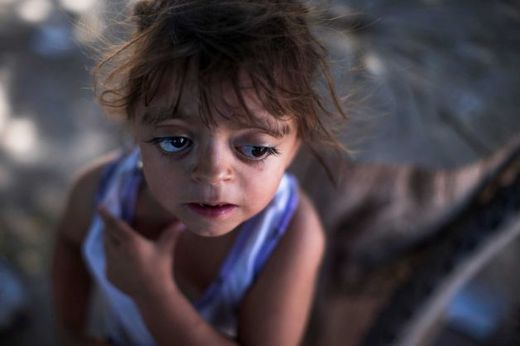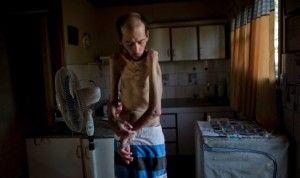"Fortunately" for us (Americans), we aren't exposed to too much chemicals sprayed onto our foods. Or are we? Either way, is it safe to consume these Agrochemicals? Have you seen the statistics? It must all be caused by genetics, right?
Click HereArgentina has recently become a giant experiment in farming genetically modified (GM) Roundup Ready (RR) soy, soy that has been genetically modified to be tolerant to Roundup, Monsanto's formulation of the herbicide glyphosate. The Argentine government has been so eager to pull the country out of a deep economic recession that occurred in the 1990's, that it restructured its economy around GM soy grown for export, most of which goes to Europe to feed livestock. In 2009, GM soy was planted on 47 million acres; over half of Argentina's cultivated land, and sprayed with over 84 million gallons of glyphosate herbicide. Spraying is usually performed from the air which can cause problems many miles away.
Back in 2002, two years after the first big harvest of RR soy, residents and doctors in this soy producing areas began reporting serious health effects from glyphosate spraying, which included high rates of birth defects, infertility, stillbirths, miscarriages, and cancers. Environmental effects included killed food crops and livestock along with streams filled with dead fish.
Dr. Dario Gianfelici, one of the first medical doctors to report problems from glyphosate spraying, says there are two levels of toxic effects from glyphosate: (1) acute, such as vomiting, diarrhea, respiratory problems, and skin rashes; and (2) chronic, which include infertility and cancer, but may not show up for 10-20 years. "Our town experienced drastic changes before and after soy. I've seen people die from cancer at age 30, I have witnessed pregnancy problems and a significant increase in fertility problems. I have seen an increase in respiratory diseases, as has never been seen before.
GM soy has been a death sentence for humans and the environment. No money can compensate for the damage that has been caused - the contamination, the deaths, the cases of cancer and malformations," Gianfelici said.

A link to birth defects in glyphosate sprayed areas of Argentina gained scientific credibility in 2009, when Prof. Andres Carrasco, a senior Argentine government scientist, went public with his research findings, which were fully published a year later. Carrasco found that glyphosate causes malformations in the frog and chicken embryos at doses far lower than those used in agricultural spraying. "The findings in the lab are compatible with malformations observed in humans exposed to glyphosate during pregnancy. I suspect the toxicity classification of glyphosate is too low... in some cases this can be a powerful poison," Carrasco said. At a recent conference, Carrasco and his colleagues said a frequent result of malformations in human embryos is miscarriage. He also said it was now not unusual for women in GM soy producing regions of Argentina to have up to five miscarriages in a row.
The research and findings were not welcomed by certain sectors of the government and industry. After these results were made public, four people from Argentina's crop protection trade association CASAFE were sent to search his laboratory he was reprimanded by Lino Barranao, Argentina's science and technology minister. Things then took a violent turn in 2010 when an organized mob attacked people who had gathered to hear Carrasco talk in La Leonesa, an agricultural town that has become a center for activism against agrochemical spraying of soy and rice crops. Three people were seriously injured and Carrasco and a colleague had to shut themselves in a car while being surrounded by people making violent threats and beating on the car for over two hours. Witnesses claim the attack was organized by local officials and a local rice producer to protect their economic interests behind the local agro - industry. Amnesty International has called for an investigation into the event.

Many people have been affected by glyphosate exposure. There is Argentine farm worker Fabian Tomasi. He was never trained to safely handle the pesticide, yet was responsible to keep crop-dusters in the air by filling their tanks as quickly as possible, even if it meant getting drenched in the poison. He is now 47, his body resembling a skeleton and is so weak he can barely swallow or go to the bathroom on his own. Schoolteacher Andrea Druetta lives in the Santa Fe Province, a town where cancer rates are two to four times higher than the national average. Here, agrochemical spraying is banned within 1,500 feet of populated areas, but there is soy planted just 150 feet from her back door. Her boys were showered in chemicals recently while swimming in their backyard pool. Sofia Gatica lost her newborn to kidney failure and filed a complaint that led to Argentina's first criminal convictions for illegal spraying. This verdict came too late for many of her 5,300 neighbors in Ituzaingo Annex, as 80% of children surveyed carried traces of pesticide in their blood. A government study there found alarming levels of agrochemical contamination in the soil and drinking water.
Amongst all the proof and tragedies, on May 1
st of this year, the United States Environmental Protection Agency raised the allowable levels of glyphosate residues in food, concluding that based on studies presented by Monsanto, "there is a reasonable certainty that no harm will result to the general population or to infants and children from aggregate exposure."
Agrochemicals are linked to many health problems; causing deformities.
Sourceshttp://www.getholistichealth.com
http://www.sfgate.com
http://www.livefreelivenatural.com
Reader Comments